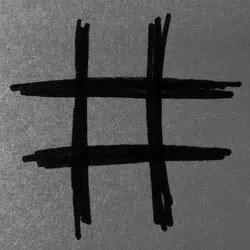Throughout our interactions with clients, colleagues, friends, family, and acquaintances, we’ve come across a surprising number of people who don’t quite understand the hashtag– the little symbol that isn’t just a trend, but rather a very established element of communication online in both personal and professional realms. They see it all over their social media walls and feeds, on marketing campaigns, print materials, and so on, but can’t grasp the concept or how (or why) to use them.
So here’s a quick breakdown of the basics, and how hashtags can be used for your communication company’s (and personal) benefit.
(And the timing is convenient, with Jimmy Fallon and Justin Timberlake’s spoof on hashtags, “#Hashtag,” sprinkled all over the Internet.)
 Look/Design
Look/Design
- Looks like a tic-tac-toe board
- Also called the “pound sign” (Think of automated voice messages that tell you to “enter your account number, followed by the pound sign.”)
(Here’s a neat article found on newyorker.com about the history of how the symbol came to be.)
Brief Explanation/History
- Links you/your post to specific channels and topics
- Used in social media such as Twitter, Facebook, Instagram, Vine, Google+ (and more)
- You type the hashtag symbol (#) first, followed by the desired word or phrase, without spaces
- Only letters and numbers are recognized in hashtags, if you insert a symbol it will disrupt the hashtag and will not be link the full phrase (e.g. “#A&Wrootbeer”)
- Hashtags can be a single word or a phrase
- Hashtags can use capitalization to differentiate words in a hashtag phrase, or be entirely lowercase (it’ll work either way)
From the interesting article by Elana Zak on The Wall Street Journal blog.
“[Chris] Messina [creator of hashtags on Twitter] elaborated what he wanted these ‘channel tags’ to do:
‘What’s really interesting, however, i[s] how these channels can be used as tags within Twitter to open up entirely new possibilities. Every time someone uses a channel tag to mark a status, not only do we know something specific about that status, but others can eavesdrop on the context of it and then join in the channel and contribute as well…’
The company [Twitter] … says the hashtag ‘was created organically by Twitter users as a way to categorize messages.’
‘Maybe 20 years from now hashtags will seem quaint, but they’re solving an important problem today,’ Messina said, ‘allowing people to express more about the content they share in order to connect with more people.’”
How It Can Be Used
- To connect your company/brand (e.g. #Disney)
- To support and connect your client/client’s product/service
e.g. Marketing Firm A is representing Restaurant Z, a new restaurant opening up in the city. Marketing Firm A tweets: “Join us at 5pm for the grand opening of #RestaurantZ on Main Street!” - To build recognition and engagement in a specific campaign of a client’s
- To build recognition and engagement in a specific event of a client’s
e.g. Contest; “Post your best nature pics for the chance to be featured in next month’s Outside magazine! Use #mynaturepic when submitting!”
e.g. Live event, like a festival (#fireflymusicfestival) or conference (#realtorsconference2013) - To branch out into channels you normally wouldn’t reside in
e.g. Say you’re a PR company who just got a client in the fashion industry. When you post something to Twitter, chances are those involved in the “fashion community” won’t come across your post. However, if you use a hashtag like “#nyfw” (New York Fashion Week), you’ve instantly opened a door- a link- to a new audience, and those audience members have a better chance of coming across your post (and thus client’s news and your company).
Now go explore the myriad of channels and topics via hashtags! #itwillbefunipromise.

 Look/Design
Look/Design